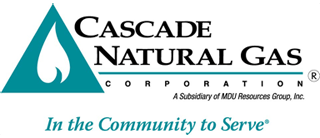 By Mary Lago, CFP®, CTFA, Principal, Wealth Management Chair Ferguson Wellman Capital Management
By Mary Lago, CFP®, CTFA, Principal, Wealth Management Chair Ferguson Wellman Capital Management
According to Giving USA, Americans contributed $499.33 billion to U.S. charities in 2022, and 64% of that—$319.04 billion—was given by individuals.
It is wonderful to consider the tremendous impact this magnitude of philanthropy can have on our society: empowering education, inspiring faith, alleviating human suffering, and advancing health care.
There are also tremendous tax benefits for donors, with the greatest savings available to those who plan strategically. Charitable giving strategies can range from a simple contribution of cash, to bunching contributions of appreciated securities through a donor-advised fund, or more complex techniques, such as charitable trusts. There are many strategies along the giving spectrum, and often a combination of these options will prove most effective in fulfilling donors’ charitable intent while also maximizing tax benefits.
Before addressing various strategies, it is important to understand eligibility and limitations for tax deductions. In general, charitable deductions are claimed as part of itemized deductions on Schedule A of the federal income tax return. Therefore, it only makes sense to itemize your tax deductions if the total of your deductions exceeds the standard deduction available to tax filers without the hassle of itemizing. For 2023, the standard deduction is $13,850 per individual or $27,700 for married couples filing jointly.
Some individuals would not exceed this threshold through their charitable giving and other typical deductions, such as state and local taxes—currently capped at $10,000 annually—or interest on a qualifying mortgage. However, strategies such as bunching multiple years of charitable contributions into a single tax year could help exceed the threshold and be a tax benefit to the donor.
In addition to minimum itemized deductions, donors also are subject to maximum charitable contributions that can be claimed as a percentage of their adjusted gross income. Donors may be able to deduct charitable contributions of up to 60% of their AGI using a combination of cash and long-term appreciated property, which has a 30% cap, so long as the support is for public charities. Reduced limits apply to other entities such as private foundations. To the degree contributions exceed these limits, the deduction may be carried forward for up to five additional years. Here’s an overview of common charitable strategies to consider when you’re planning your end of year charitable giving:
-
- Direct contributions of “cash” offer the advantage of extreme simplicity. The donor may write a check, text a code, charge a card, or drop some change in the canister. For cash gifts to be eligible for a tax deduction, any contribution of $250 or more must be supported by records of the transaction meeting IRS requirements.
- Contributions of appreciated assets, such as stock, held for more than one year may be particularly valuable as the donor is able to claim the full market value of the asset as a charitable deduction, while also avoiding the capital gains taxes otherwise due if the asset was sold by the individual prior to the contribution. Many charitable organizations have the capacity to receive gifts of appreciated assets, but donor-advised funds can help facilitate gifts, often simplifying the process for the donor and charitable organization.
- Donor-advised funds are qualified charitable entities sponsored by an organization, such as the Oregon Community Foundation, or Schwab Charitable, in which the donor “advises” the fund administrator as to the desired charitable recipients and amounts. This release of control allows donors to claim the tax deduction at the time assets are contributed to the donor-advised fund, rather than when the funds are ultimately distributed to charities. It can also simplify the process for both the donor and the beneficiary. This ability to separate the tax deduction from the ultimate distribution allows donors to group several years of planned charitable giving into a single year, while maintaining annual support of their favorite charities. This strategy may move a taxpayer above the standard deduction threshold and improve tax savings. It may also be used in years in which a donor has significantly higher than normal taxable income.
- Qualified charitable distributions (QCDs), which are the direct contribution of funds from an individual retirement account (IRA) to charity, may optimize tax and other benefits for donors who aren’t itemizing their deductions. This approach is most appropriate for those who are subject to required minimum distributions from IRAs and not dependent on the income. For those who aren’t itemizing deductions on their income tax returns and have the desire to support charities, QCDs can be advantageous as this approach avoids the realization of income that is generally triggered by distributions from traditional non-Roth IRAs. For 2023, QCDs are limited to $100,000 per year, per IRA account owner and are only available to those over age 70 1/2. In addition, QCDs may only be made to public charities and may not be made to foundations or donor-advised funds.
- Lastly, charitable trusts can be very powerful tools for deferring gains, maximizing tax deductions, and even transferring wealth to future generations, but are more complex than many gifts. Charitable remainder trusts are most appropriate for individuals with charitable intent—especially those planning an estate contribution—who would like to receive a stream of income for a period of time and leave the remaining balance to charity. For the agreement to leave the balance to charity, the individual receives a current income tax deduction for the calculated remainder value and also defers any gain realized on the sale of assets until the funds are received by the individual. This ability to defer gain has made charitable remainder trusts a popular choice for those selling highly appreciated assets such as real estate, business interests, and concentrated stock positions.
Many factors will impact the right philanthropic approach for each donor, such as desired impact, timing, complexity, cash flow, and ability to claim tax deductions. Be sure to consult with your tax, legal and financial advisors to determine which charitable giving strategies make the most sense for you and your situation. And, while having the conversation, ask your team about other tax-wise techniques including deferring or accelerating income/deductions to manage tax-rates. Common year-end strategies include: funding retirement, health savings and 529 education accounts; completing family gifting (up to $17,000 per recipient/ per donor); Roth IRA conversions and realizing tax losses in your investment portfolio.






0 Comments